Are you curious about how the foods you eat can influence your well-being? In Traditional Chinese Medicine (TCM), the concepts of warming and cooling foods play a crucial role in maintaining balance and health.
Imagine how good it feels sipping a warm bowl of ABC Soup on a chilly day or enjoying a grilled watermelon salad in the summertime. These seasonal choices not only bring comfort through their temperature but also through the unique “Energy” they carry and their effects on your body. In this article, we’ll introduce the Five Energies of Food from an Eastern TCM perspective, along with easy-to-understand Western explanations. We hope this helps you make informed choices that support your health and vitality.
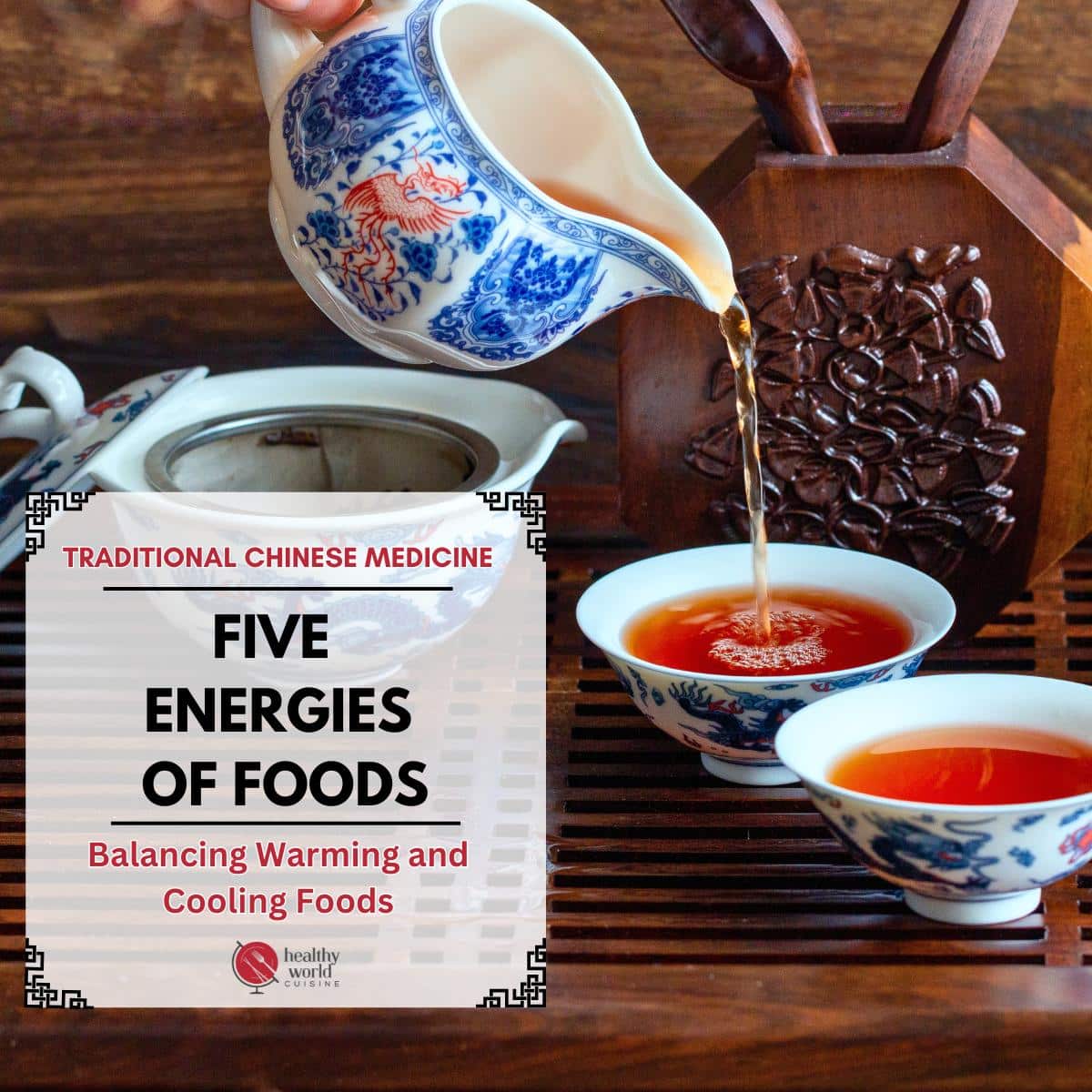
Original Author: Cindy Mai from Root + Spring in March 2017 and updated in March 2025 by Healthy World Cuisine to include helpful infographics and content.
Jump to:
- Five Energies of Traditional Chinese Medicine
- Examples: Warming and Cooling Effects
- Body Constitution
- TCM’s 9 Basic Body Constitutions
- Keeping the Balance
- Share this Infographic on Your Website
- Ying and Yang Food List
- Balancing Energy of Foods with Spices and Herbs
- Summary
- More Traditional Chinese Medicine (TCM)
- About the Author:
- Sources
Five Energies of Traditional Chinese Medicine
In the Western diet, we typically assess our food for their calories, fat, carbohydrates, proteins, and other nutritional content. However, in the Chinese diet and according to TCM, there are two additional properties that foods are classified in: "energy" and "flavor". Today, I introduce you to the ENERGIES and give a few examples of what types of foods could fall into which category.
According to TCM, foods are just like healing herbs that can and should be selected appropriately for your body whether you need to cleanse, tonify, or regulate your system. There are five total "energies" of food: cold, hot, warm, cool, and neutral. (1) Energy, of course, refers not to the actual temperature of the food but the effects they generate in the human body.
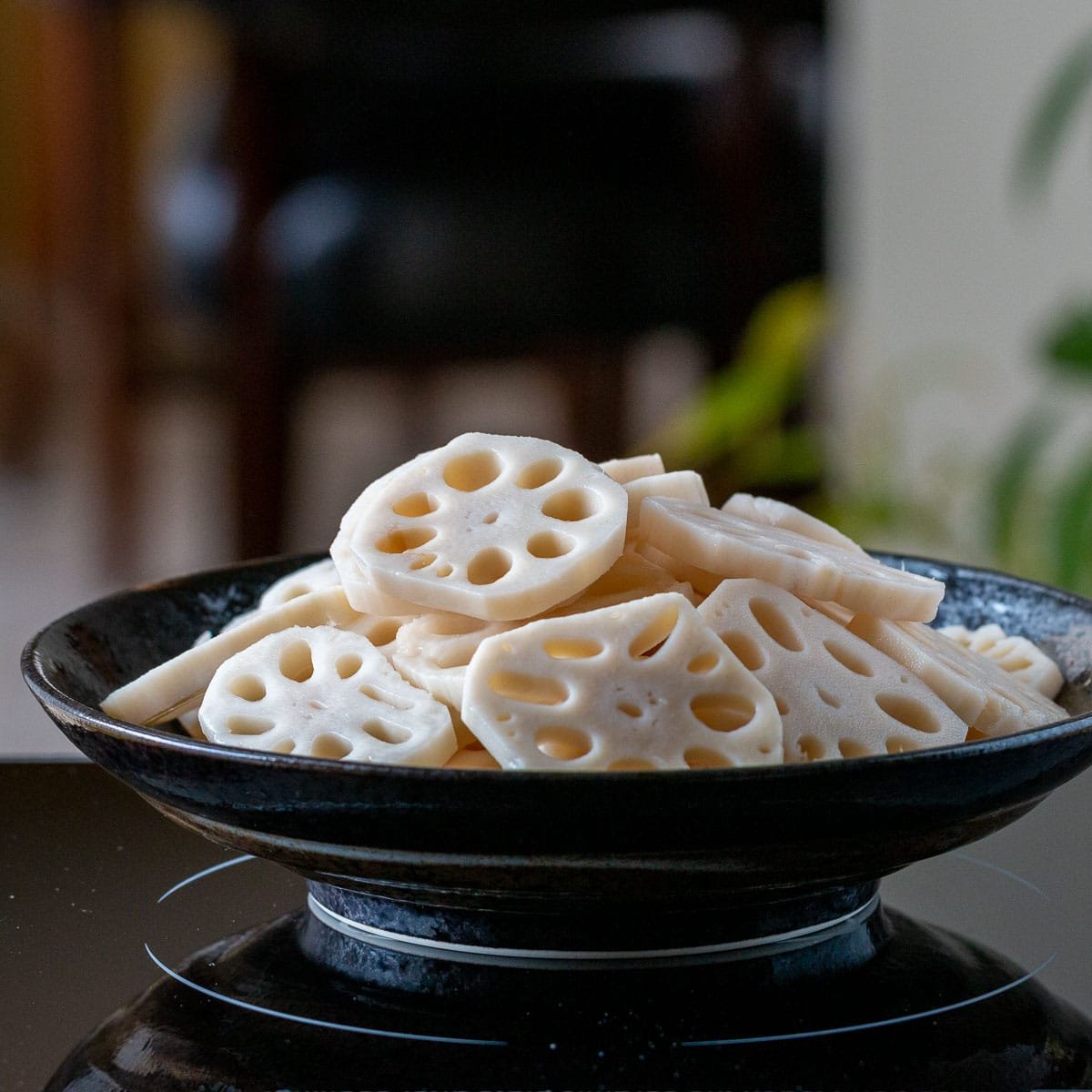
Examples: Warming and Cooling Effects
Let's take chrysanthemum (herbal tea flower) as an example. Chrysanthemum has a cold energy. When we consume chrysanthemum, whether it be a hot tea beverage, or after the temporary heat fades away, cold energy will begin internally. This is why chrysanthemum is known to have a cold energy.
Different energies act upon the human body in different ways and affect our state of health, so it is important to know about the five energies of food. For example, if a person suffers from heat rashes and the pain is particularly severe during the summer, eating foods with a "cool" or "cold" energy can alleviate the pain significantly. Or if a person suffers from joint pain that worsens during the winter, one could find solace in "warm" or "hot" foods.
Body Constitution
We are all very different. That is what makes the world go around. From our personalities to what is going on inside our bodies, no two people are the same and nor should your diet preferences.
Body constitution refers to your unique physical and energetic makeup, shaped by both inherent traits you were born with and external influences, such as environment and lifestyle. (2) It includes factors like body type, metabolism, and overall health tendencies. Understanding your body constitution and eating with the Chinese body clock can help you make better lifestyle and dietary choices that support your well-being.
According to TCM, there is a total of 9 body constitutions. (3) To add to the complexity, many individuals have a mixed diagnosis. Therefore, we suggest you consult with a local Chinese Medicine practitioner to determine if you need to include more cooling, neutral or warming foods in your diet. In addition, changes to your body constitution may happen as we age, have exposure to a different environment or lifestyle and even with menopause.

TCM’s 9 Basic Body Constitutions
- Neutral is our end goal where everything is in balance.
- Qi deficiency
- Yang deficiency
- Yin deficiency
- Phlegm Damp
- Phlegm Heat
- Blood Stagnation
- Qi Stagnation
- Special Constitution
Depending on your body constitution, adding in more warming or cooling foods to your diet may help bring you back into balance. For example, a yang deficiency patient may have cold hands and feet, suffer from low energy, and prefer warm drinks and soups and stews. They may benefit from more ingredients from the warming foods list. However, a yin deficiency patient may have a dry mouth, are hot and flushed and prefer to be in the air conditioning. These patients may benefit from more cooling foods.
Keeping the Balance
In TCM, food is medicine. (4) Often, a diet recommendation is also part of your plan of care. What you choose to eat can either nourish or work against you. Eating only cold energy foods or all warm and hot energy foods can also cause an imbalance and potential health issues.
For example, if you get stuck in a food rut, like a toddler who will only eat strawberry Greek yogurt for every meal, it can lead to health issues. While chocolate-covered yogurt bites are delicious, yogurt is considered a cooling food. Dairy products can cause dampness and increased phlegm if you eat too much of it.
Likewise, if you were told by your TCM practitioner that you need to follow a spleen qi deficiency diet but are adding chili peppers to every meal – you may start to have excess heat imbalance. It’s all about balance and moderation.
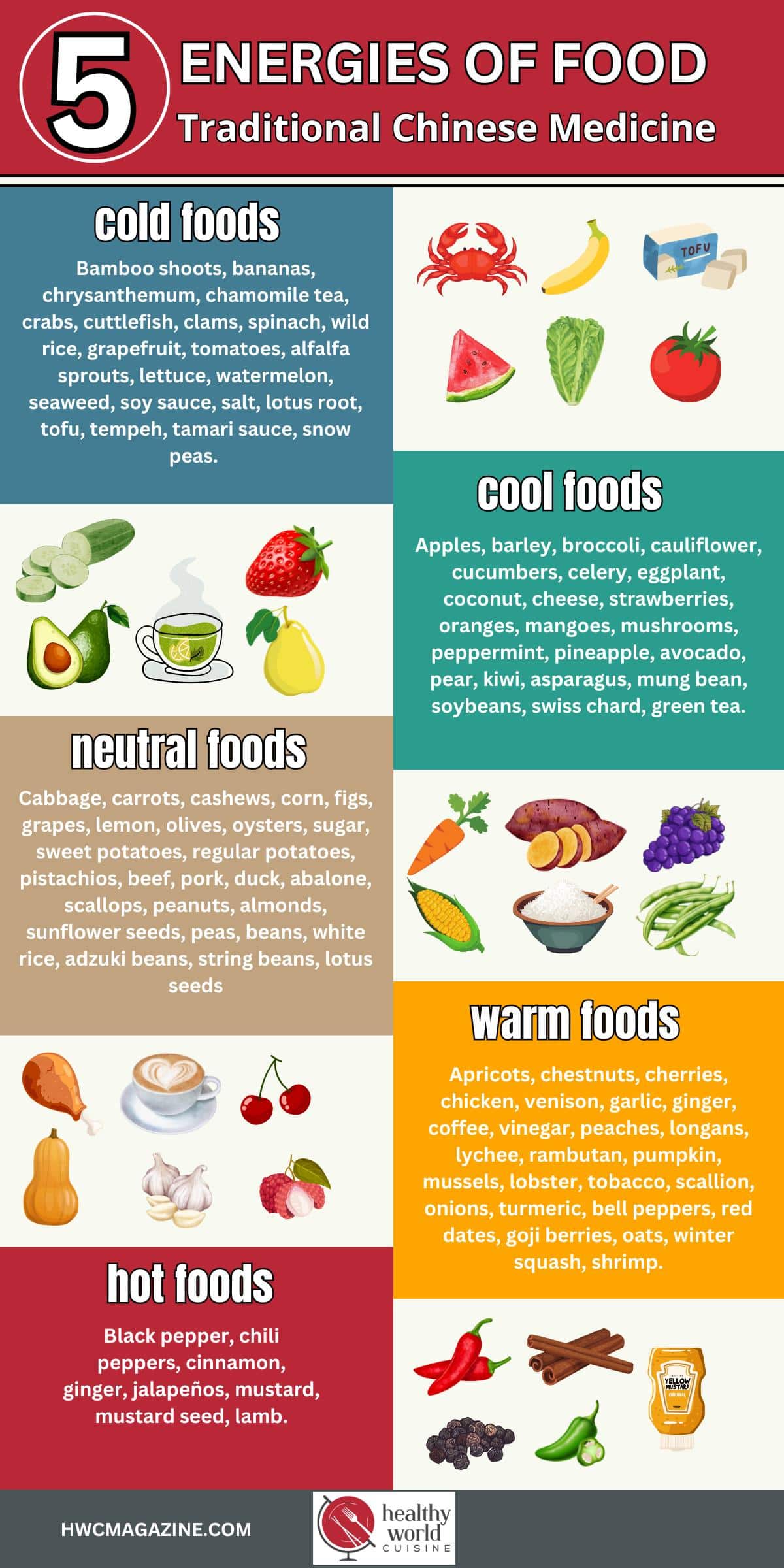
Share this Infographic on Your Website
Ying and Yang Food List
If you have been directed by a Chinese medicine physician or acupuncturist to eat more warming (yang) or cooling (yin) foods, this list is a great place to start. (5) Please continue to eat nutritious balanced meals but start adding more foods from either the warming or cooling list as directed. Refrain from consuming only foods in one list as this too can cause an imbalance. This yin and yang food list is not all inclusive. However, it does contain many of the main ingredients to cook a healthy meal.
- Cold: Bamboo shoots, bananas, chrysanthemum, chamomile tea, crabs, cuttlefish, clams, spinach, wild rice, grapefruit, tomatoes, alfalfa sprouts, lettuce, watermelon, seaweed, soy sauce, salt, lotus root, tofu, tempeh, tamari sauce, snow peas.
- Cool: Apples, barley, broccoli, buckwheat, cauliflower, cucumbers, celery, eggplant, coconut, cheese, cream, eggplant, strawberries, oranges, mangoes, mushrooms, peppermint, pineapple, avocado, pear, kiwi, asparagus, bok choy, asparagus, mung bean, soybeans, Swiss chard, green tea.
- Neutral: Cabbage, carrots, cashews, corn, figs, grapes, lemon, olives, oysters, sugar and honey, sweet potatoes, regular potatoes, pistachios, beef, pork, duck, abalone, scallops, peanuts, almonds, sunflower seeds, peas, beans (kidney, navy, black), white rice, adzuki beans, string beans, broad beans, lotus seeds.
- Warm: apricots, chestnuts, cherries, chicken, venison, garlic, ginger, coffee, vinegar, peaches, longans, lychee, rambutan, pumpkin, mussels, lobster, tobacco, scallion, onions, turmeric, bell peppers (slightly warm), miso paste (lightly warm), red dates, goji berries, oats, Winter squash (butternut, pumpkin, acorn, etc.- slightly warm to neutral), anise, shrimp, salmon.
- Hot: Black pepper, chili, chili peppers, cinnamon, ginger, jalapeños, mustard, mustard seed, lamb.
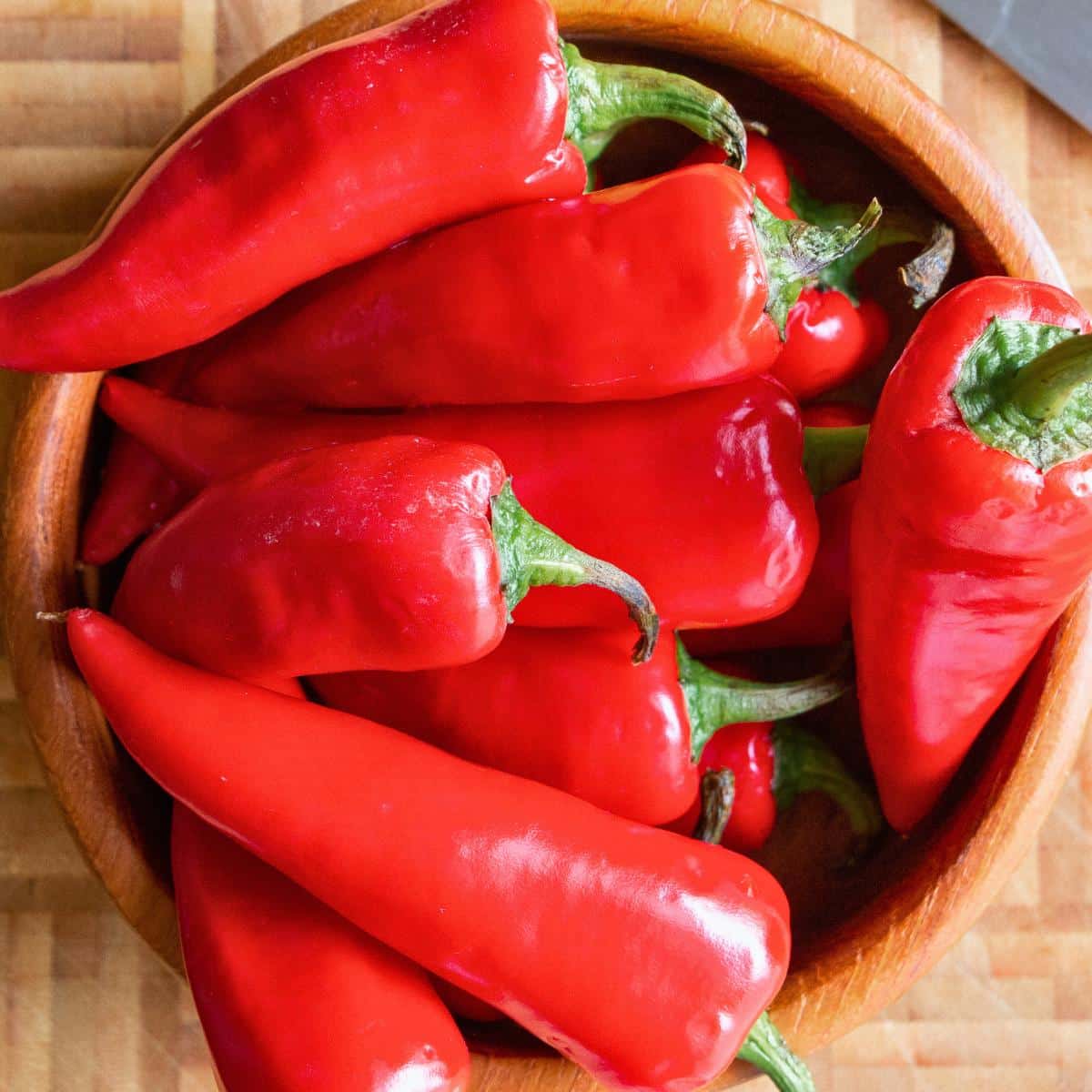
Balancing Energy of Foods with Spices and Herbs
Let’s look at the basic banana. All by itself, this fruit’s energy is cold in nature. If you add warming spices and bake it into a delicious Cranberry Oatmeal Breakfast Cookie its total energy becomes balanced.
Next, let’s look at our easy beef pho recipe. Beef, ginger, cinnamon, anise, chili pepper, garlic, basil, and onion have warm energy. However, its garnished with cooling bean sprouts, mint, and cilantro for a delicious in between season recipe.
Choosing more neutral foods like our roasted red potatoes and cabbage recipe is a delicious and healthy way to stay in balance.
Summary
We hope that by introducing the five energies of food concept to you, it will open your eyes to a new way of thinking about food. When we view food in this context, it's no longer just eating nourishing healthy food but selecting food that is right for our body types and current condition. Food can help or hinder or efforts to recover from ailments or improve our health.
More Traditional Chinese Medicine (TCM)
About the Author:
Cindy Mai is the founder of ROOT + SPRING a shop that provides quality traditional, Chinese holistic remedies and information to everyone. Based in Los Angeles, she sees the need for alternative healthcare now more than ever. Her goal is to provide knowledge on gentle, herbal science, and create innovative herbal products that naturally will make you feel great, from inside out. Healing is within our hands.
Sources
- Matos LC, Machado JP, Monteiro FJ, Greten HJ. Understanding Traditional Chinese Medicine Therapeutics: An Overview of the Basics and Clinical Applications. Healthcare (Basel). 2021 Mar 1;9(3):257.
- Lu T, Yan J, Chang J, Cai J, Yin L, Yuan J, Huang L, Li Y, Bai M, Hau KT, Wu D, Yang Z. Valid and Convenient Questionnaire Assessment of Chinese Body Constitution: Item Characteristics, Reliability, and Construct Validation. Patient Prefer Adherence. 2022; 16:1875-1884
- Zhu Y, Shi H, Wang Q, Wang Y, Yu X, Di J, Zhang X, Li Y, Li T, Yan H. Association between Nine Types of TCM Constitution and Five Chronic Diseases: A Correspondence Analysis Based on a Sample of 2,660 Participants. Evid Based Complement Alternat Med. 2017; 2017:9439682.
- Chen J. Essential role of medicine and food homology in health and wellness. Chin Herb Med. 2023 May 25;15(3):347-348.
- Elaine Kris Ludman, Jacqueline M. Newman, Yin and Yang in the health-related food practices of three Chinese groups, Journal of Nutrition Education, Volume 16, Issue 1,1984, Pages 3-5, ISSN 0022-3182.


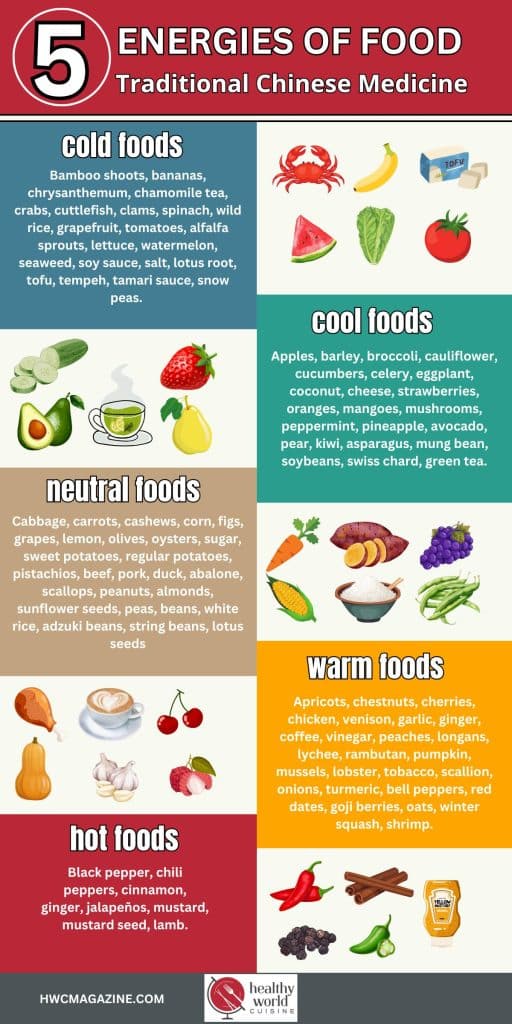
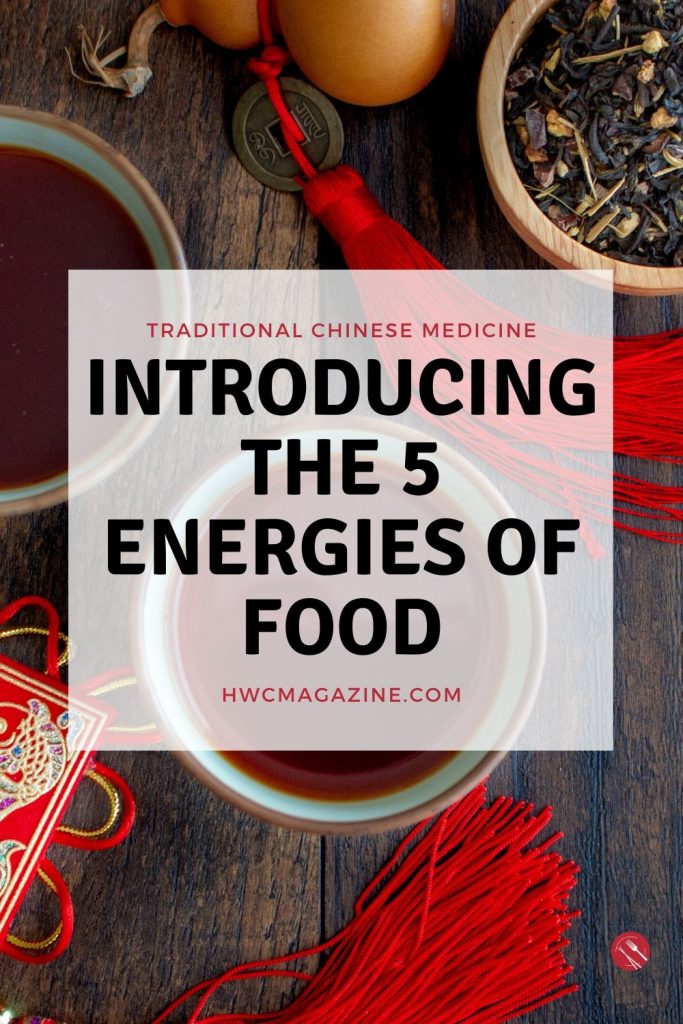
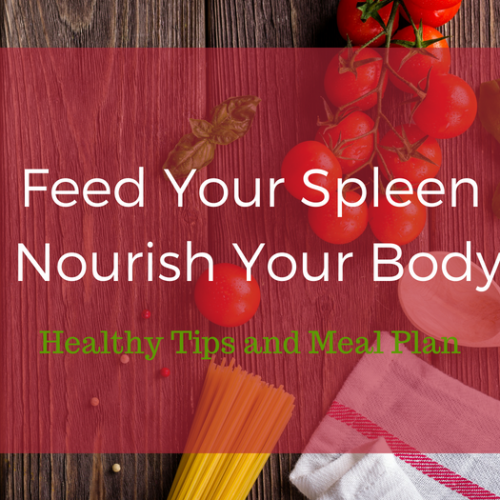
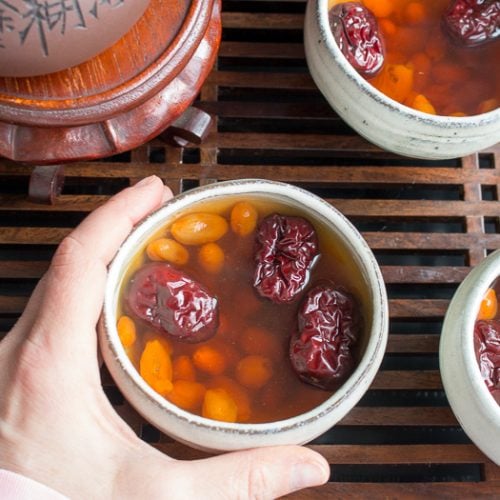
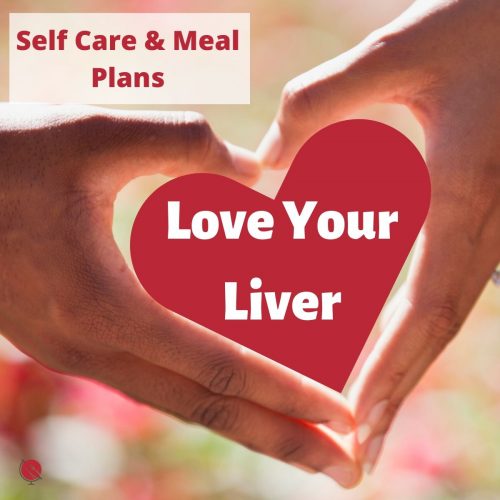

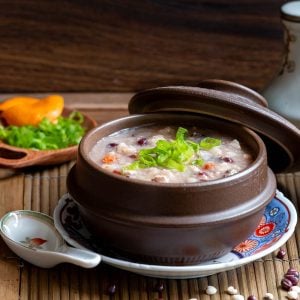
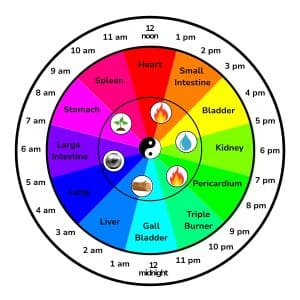
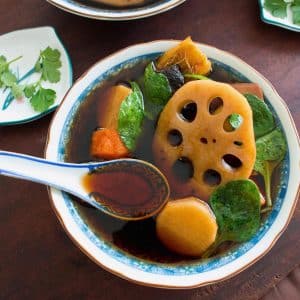

Hannah says
There's such wisdom to this way of eating! I never really considered it before, but it makes good sense. I should pay more attention to the energies in food too.
Michelle says
Such a great guide to learning about the energies of food. Bookmarked for future reference!
HWC Magazine says
Thank you Michelle. We a delighted this guide about Chinese Medicine warming and cooling foods is helpful.
Eha Carr says
Lordie - I am surprised! Knowing very little about the Chinese ways as far as foods are concerned your post is making me interested - must post it to friends in less busy days to come! I have genuinely looked at which foods come naturally to me - they all seem to belong to the 'cold' or 'cool' categories - would not have expected that and homework is obviously due 🙂 ! Thanks!
HWC Magazine says
Thank you Eha. I know it can be quite surprising to see which foods have warming and cooling energies. It may be a very good thing that you are consuming more cooling energy foods but the only way to be certain is to be evaluated by a TCM clinician to see what type of body constitution you have. Stay well and take care
Emi says
can I mix gojiberry & jujube with luo han guo & chrysantenum? is it good combination for cooling effect?
HWC Magazine says
Hi there Emi, thanks for your question. It depends on your health goals and what you are trying to achieve. Combining these ingredients together may just bring the mixture to more of a neutral to slight cooling depending on how much of each item you place into your tea.
goji berries are neutral
jujube - warming
luo han guo - cooling
chrysanthemum - cooling
Larry says
I never knew this -- HWC is a great resource.
HWC Magazine says
Thanks so much Larry. We are delighted to hear that our Eastern insights about nutrition are helpful. Take care
Carla says
Very interesting.
HWC Magazine says
Thank you Carla. Glad you enjoyed learning more about the introduction of the five energies of food.
angsarap.net says
Wow this is nice to know, now I can plan better what food to have on specific season based on their properties
HWC Magazine says
We are so glad you liked the article about the Five Energies of Food. This is just a very high level overview but there is so much more to learn about Traditional Chinese Medicine and how food can be either a help or a hinder to our health.
HWC Magazine says
Thank you Cindy Mai for posting this very informative article on the 5 energies of food!